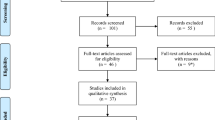Summary
After almost a decade of practical experience with the selective, chemical epilation as a most advanced method in the treatment of tinea capitis, a progress report is presented. The author's additional material covered 153 more cases of tinea microsporina, while DoctorGimby's material encompassed 849 cases during an epidemic of tinea microsporina at Sault St. Marie, Ontario, Canada.
The formula of the Compound for selective, chemical epilation is given in the body of the paper. Despite the fact that the in vitro tests with its single ingredients (Copper sulfate, Chloral hydrate) revealed some fungistatic properties, the practical, clinical application of this preparation has nothing to do with its possible antifungal effect.
The efficiency of the Compound is based solely upon its selective, chemical, epilatory power on fungus infected hairs only. The Compound completely penetrates the hair follicle in its whole depth and saturates the aerial and root portions of the hair from within. The infected hairs — and only the infected ones — are separated from the papila pili so that they can be simply brushed out from the scalp. The fungi are not killed by this method, because they cannot be killed in human tissues by any method.
The Compound is neither an irritant, nor a sensitizer; it has no systemic effect. The total duration of the treatment with the Compound, if correctly and conscientiously carried out, is from two to four weeks.
Simple instructions for the guardians are presented for the purpose to properly carry out the home-treatment.
Zusammenfassung
Nach der praktischen Erfahrung von beinahe einem Jahrzehnt mit der selektiven, chemischen Epilation, als die meist entwickelte Methode in der Behandlung der mykotischen Infektion der behaarten Kopfhaut, wird dieser Fortschrittsbericht erstattet. Des Autors Krankengut umfasste 153 zusätzliche Fälle von Tinea microsporina, während auf 849 Fälle sich DoktorGimby's Krankengut während einer Epidemie dieser Krankheit in Sault St. Marie, Ontario, Canada erstreckte.
Die Formel des Mittels für die selektive, chemische Epilation ist in der Arbeit gegeben. Wie wohl die in vitro Tests mit den einzelnen Bestandteilen des Mittels (Kupfersulfat, Chloralhydrat) etwas fungistatische Wirkung gezeigt hatten, hat die praktische, klinische Anwendung dieses Mittels mit der möglichen, antifungalen Wirkung nichts zu tun.
Die Wirksamkeit des Mittels beruht allein auf seiner selektiven, chemischen Eingenschaft, lediglich die Pilz-infizierten Haare von der Kopfhaut zu entfernen. Das selektive Mittel dringt in den Haarfollikelapparat in seine ganze Tiefe ein und durchtränkt den Haarschaft und die Haarwurzel in ihrer ganzen Dicke. Die infizierten Haare, — und nur die infizierten, — werden von der Papilla pili getrennt, so dass sie von der Kopfhaut einfach herausgebürstet werden können. Die Pilze werden dabei nicht getötet, weil man sie mit keiner Methode in dem menschlichen Gewebe töten kann.
Weder reizt das selektive Mittel das Gewebe, noch macht es empfindlich. Es hat keine Systemwirkung. Die Dauer der Behandlung mit dem selektiven Mittel, wenn es genau und gewissenhaft angewendet wird, ist zwei bis vier Wochen.
Eine einfache Anweisung für die Eltern für die genaue Ausführung der Behandlung ist gegeben.
Similar content being viewed by others
References
Benedek, T.: Selective, chemical epilation in the treatment of tinea capitis as contrasted with the diffuse X-Ray epilation. Urol. & Cutan. Rev.55 (9): 539–550, 1951. (29 references; papers not quoted here separately can be found in this paper)
Benedek, T. &Felsher, I. M.: Epidemiology of Tinea capitis. I. A study of tinea capitis in a dispensary. Arch. Dermat. & Syph.49: 120–123, 1944.
Benedek, T.: Contribution to the epidemiology of Tinea capitis. II Tinea capitis as a public health problem in family and school. Urol. & Cutan Rev.47 (7): 416–432, 1943.
Benedek, T.: Contribution to the Epidemiology of Tinea capitis. III. Some diagnostic problems in Tinea capitis. Mycologia36 (6): 598–626, 1944.
Myers, W. G.: in Panel Discussion on “Social Aspects of Science as Illustrated by the Radiation Problem” at the meeting of the American Association for Advancement of Science, December 29, 1957, Indianapolis. — Medical News,4 (I): January 13, 1958.
Author information
Authors and Affiliations
Rights and permissions
About this article
Cite this article
Benedek, T. Selective, chemical epilation in the treatment of tinea capitis as contrasted with the diffuse X-ray epilation. Mycopathologia et Mycologia Applicata 9, 97–110 (1958). https://doi.org/10.1007/BF02051043
Issue Date:
DOI: https://doi.org/10.1007/BF02051043




